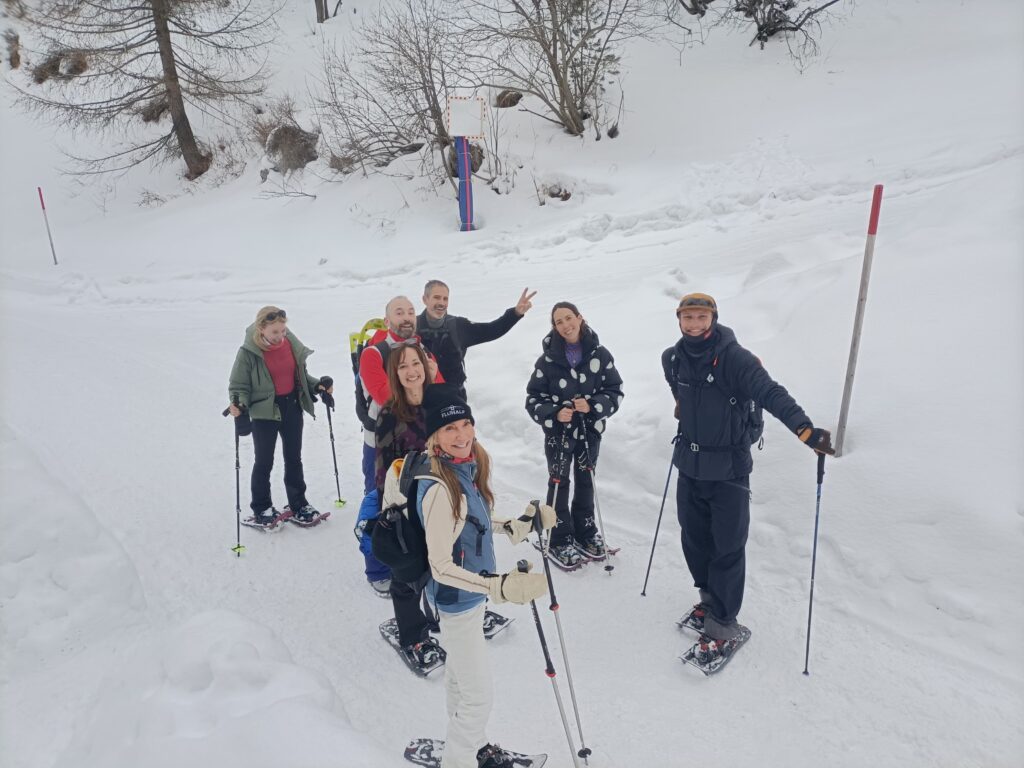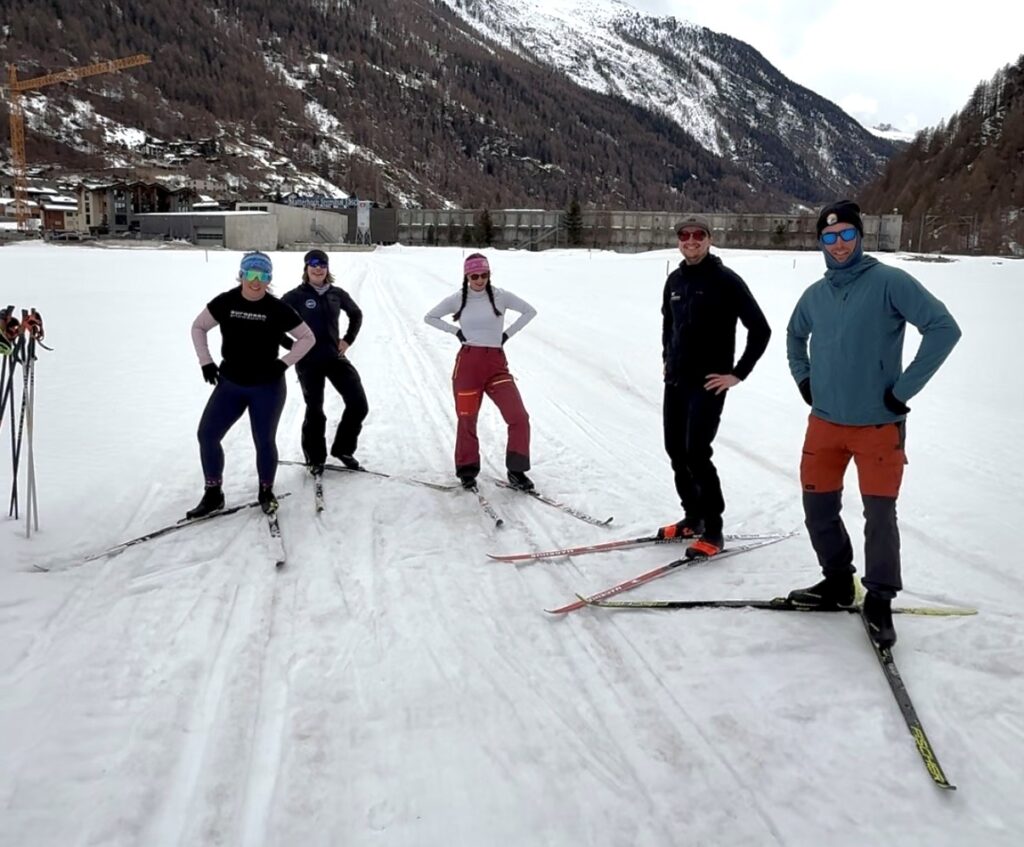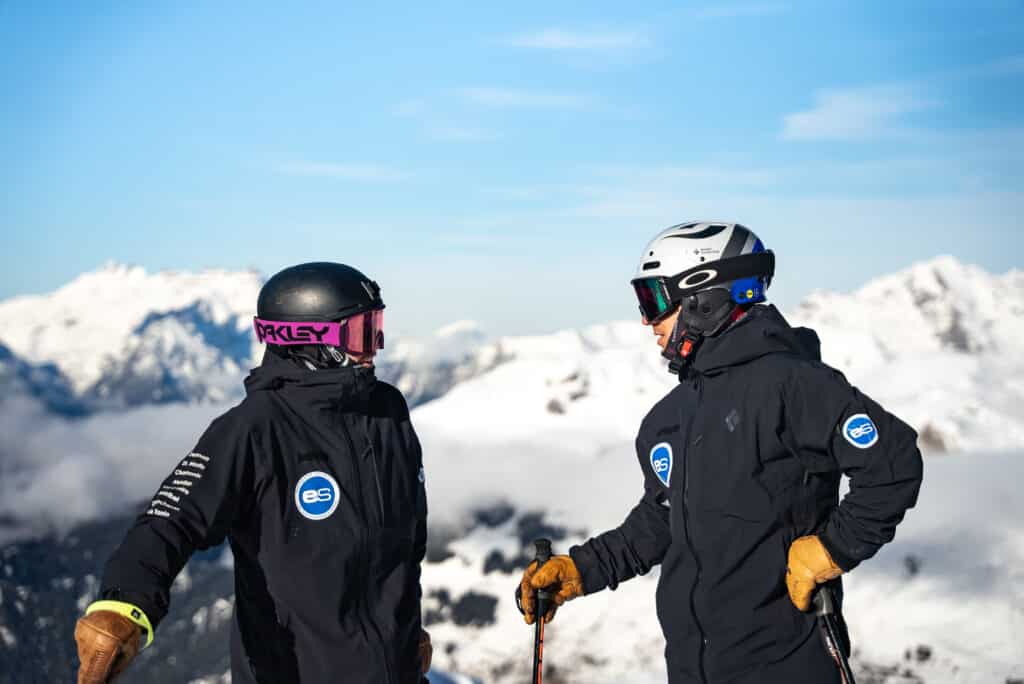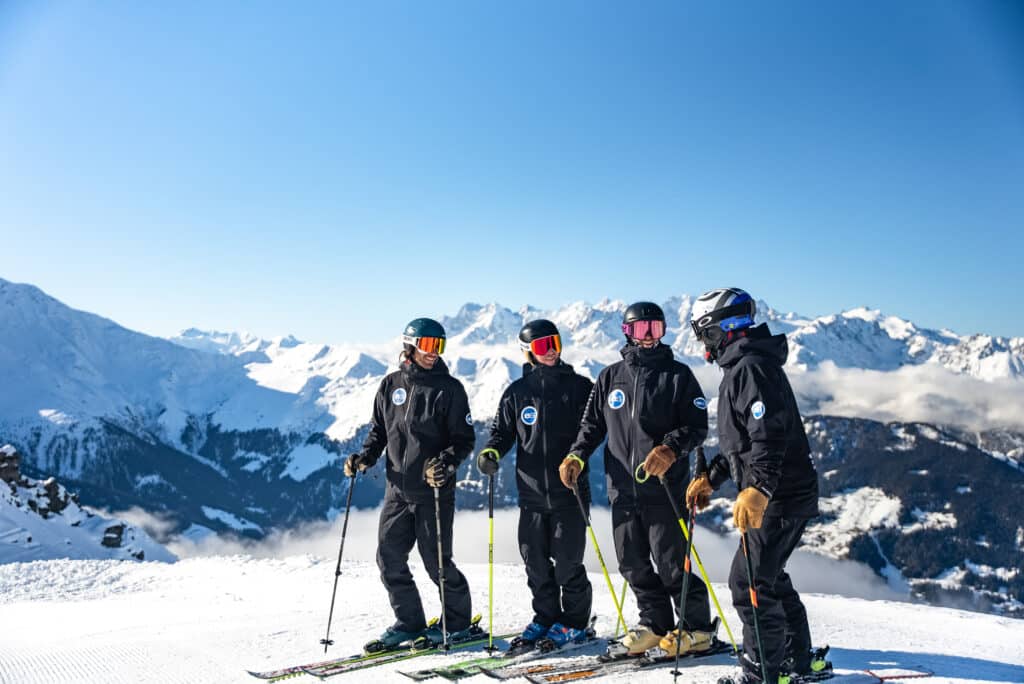What is Ski Touring?
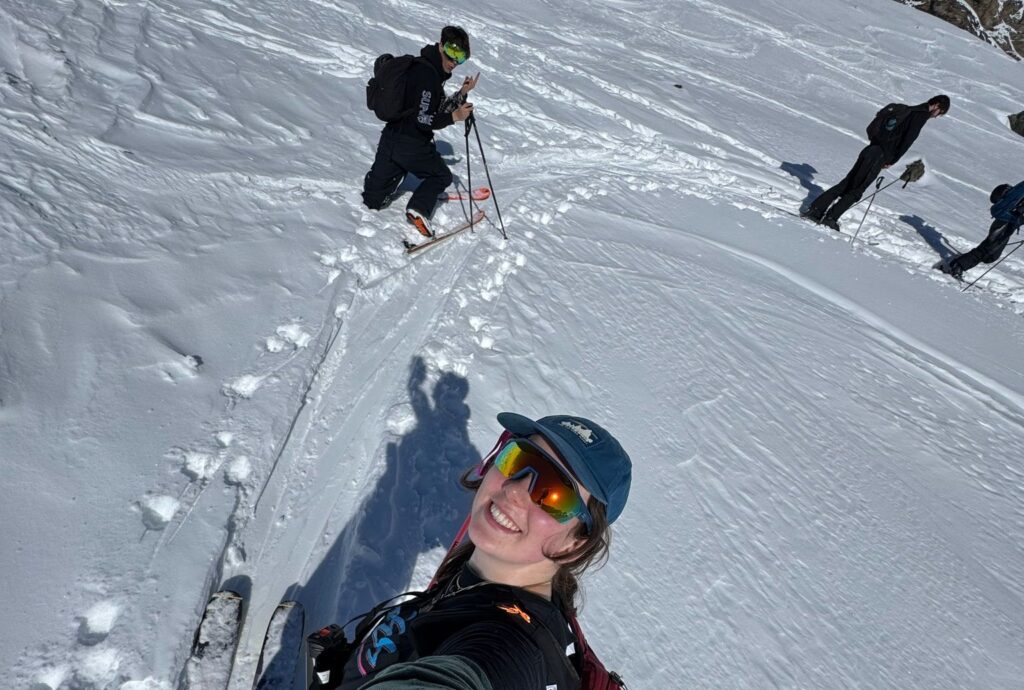
Ski touring is going up the mountain on your skis before you go back down. You climb up using „skins“ which attach to the underside of your skis. Originally these were made of sealskin. The fur of the seal points down and enables your skis to grip the snow as you walk up. Then at the top of the mountain you take off the skins and ski down. Just to reassure you, the skins are now synthetic and no seals are needed.
To help walking up the mountain, ski touring bindings have a detachable heel for while you are climbing. Your ski boot remains attached at the toe, and the heel is free to move as you walk. The bottom part of the heel piece can be adjusted depending on the steepness. Then at the top you attach the heel again so that you can ski down as in a normal binding.
Usually ski touring skis are lighter than alpine skis, so that the walk up is easier. This means they have less performance than an alpine ski, but are easier to go up with.
With ski touring, the fun of the sport is seeking the untouched snow. The appeal of this low-impact activity is the challenging walk up and the isolated un-pisted ski down.
There is something about touring that really gets you up close to the mountains. Touring gives you a deeper appreciation for the landscape we are privileged enough to have access to. By touring up to hidden areas, not only can you really earn your ski down, but the ski itself is a lot more rewarding when the snow is completely untracked and all for you!
Why is it sustainable?
For an industry that that relies heavily on good snow conditions, it is becoming increasingly important that we do our bit to preserve the long winters. With Glaciers melting at an alarming rate, and spring emerging earlier each year, what can we do to reduce our impact to keep our cherished winters, whilst still enjoying alpine tourism and the sports that we love?
Not just for the industry, it is important we can do what’s possible to slow the rate of climate change. One way we can do this is by embracing ski touring – not only a fun activity, but a crucial way we can help reduce our carbon footprint.
It goes without saying that ski touring is one of the most sustainable ways you can enjoy the mountains, relying solely on you own strength to get you up. The biggest users of energy in ski resorts are the ski lifts and the fuel required to run the SnowCats that groom the slopes. Although many resorts are making the switch to hybrid or electric groomers, the fact remains that they are still high users of energy.
With the warming weather, many resorts also rely on artificial snow to keep the trails topped up and the winters extended for as long as possible. Snowmaking has a self-destructing element, as in order to keep the snow coming, it has to rely on energy intensive machinery. Although this is a good short-term solution to allow people to keep skiing even without natural snowfall, there is a Catch 22 element here.
Ski Touring Technology
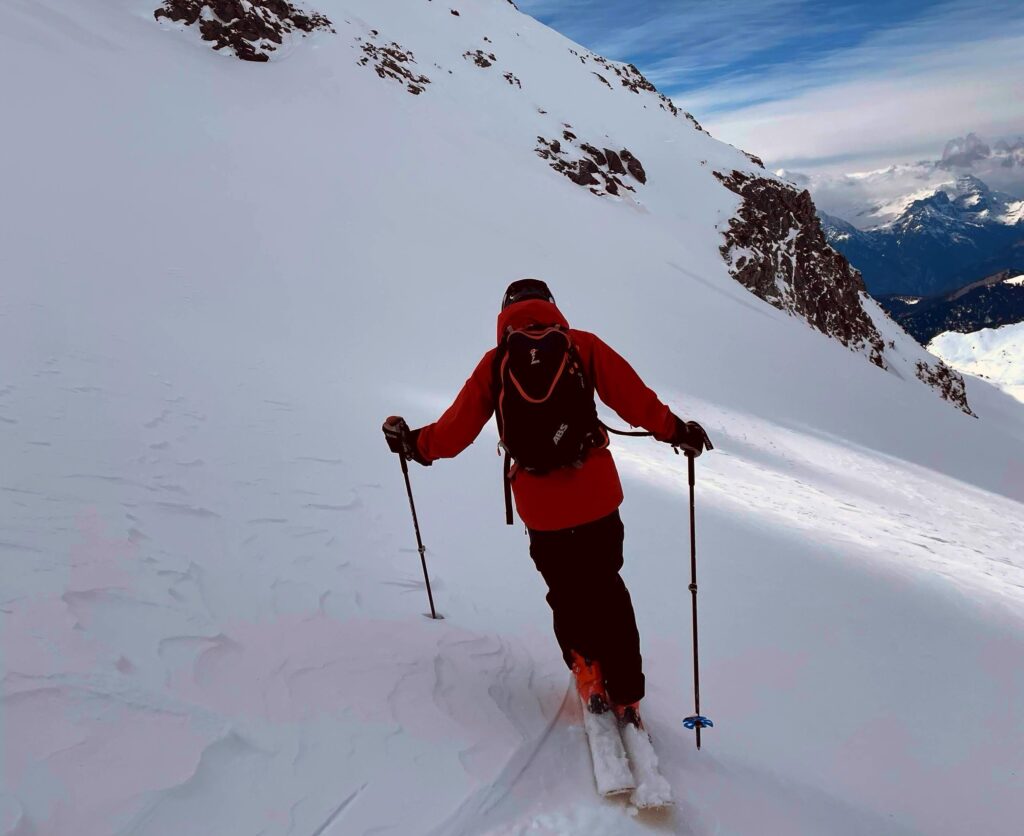
Once, the equipment involved in ski touring was bulky and heavy, putting many people off. However big improvements have been made recently. Here are just a few examples;
Bindings – Nowadays, you are able to find a range of bindings for touring skis depending on your preference. Pin bindings are the most lightweight bindings, not adding any extra weight that is needed to ski touring and making the walk up considerably easier. These bindings are designed with simplicity in mind, adding no extra bulk, and ensuring a smooth, effortless climb. Alternatively, Duke PT bindings, are a good hybrid option offering the best of both worlds. You can enjoy a lightweight binding for your ski up, and a high performance, more secure binding for your ski down too, looking just like regular ski bindings from the outside.
Boots- Hybrid touring boots are also a great option for skiers who do not want to buy or travel with multiple boots. You are able to enjoy all the technology of touring boots with the boots in walk mode for your ascent, whilst still enjoying the stiffness of the boots for the ski down or your regular alpine skiing.
Clothing
Apparel– Many ski wear brands now cater to the tourers of the mountains. Jackets and trousers are lightweight, easy to carry and offer full range of motion. Unlike some ski jackets which are designed for maximum warmth, shells are thin, breathable and equipped with large vents. The vents are a great way to allow tourers to fully regulate their body temperature. Some even come with pocket specifically designed for holding avalanche transceivers, making carrying them more comfortable and non-invasive.
We are big fans of Black Diamond kit. Black Diamond have supplied our instructor uniforms for years now and provide waterproof and windproof lightweight breathable solutions with big pockets. Big pockets are essential for all those extras your instructors need to have, like their first aid kit, spare buffs, tissues…
Avalanche gear
Avalanche gear- Whilst ski touring offers freedom and beautiful views, it cannot be forgotten that there are dangers on mountain. For this reason, carrying avalanche safety equipment is vital for ski touring outside the slopes. Avalanche gear stripped down includes a shovel, probe and transceiver, but depending on your expertise and risk taken, more can be added. For those who take on more challenging and remote terrain, additional safety equipment such as airbags can provide extra protection. This gear now is more lightweight than ever, making it much easier to carry in a backpack.
The most lightweight avalanche safety gear you can take with you, though, is knowledge. So, ensure you are aware of the risks you are taking and what you can do to reduce them.
See more about our off piste lessons here.
How do I get involved?
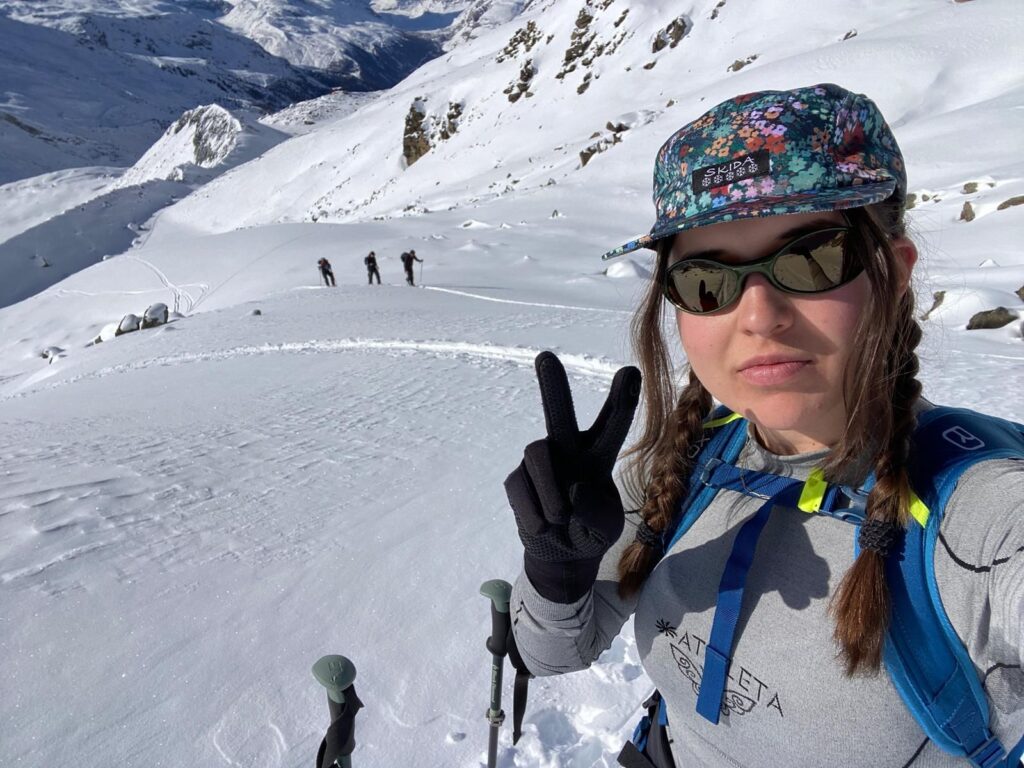
Ski touring can seem daunting to begin with, especially with the idea of heading off to an isolated area of the mountain. The beauty of ski touring, though, is you can definitely start small. There are many trails you can take in Zermatt and Verbier alike which are beginner friendly. Many rental shops offer touring gear, and you can begin by touring along the side of trails.
See our partners at Mountain Air in Verbier for good advice and a good selection of gear.
Getting away from the crowds isn’t only reserved to those going to isolated areas, the easiest way to get the slopes to yourself is to hike up early in the morning to catch the sunrise. That way you can enjoy the freshly groomed corduroy before everyone else, all from the safety of the controlled pistes.
If you are looking for more of an adventure, or simply someone who knows the mountain like the back of their hand, you can get a lesson in touring with one of our Brevet qualified instructors.
Already a seasoned ski tourer? Check out the Patrouille des Glaciers, a ski touring race from Zermatt to Verbier that runs every 2 years. You can see a short video on our instructors competing here
Sustainability tips

Although Ski touring is more eco-friendly option than taking chair lifts, here are some more ideas to reduce your impact. Use reusable water bottles as opposed to plastic ones, take all your litter with you, take the train to resort. You can also find ski clothes made from recycled materials or second hand.
See our partners at Cirkel Supply Co for clothing rentals.
Remember, although touring offers you the opportunity to find secluded spots, make sure you stay outside of protected areas. Birds, Ibexes, Chamois and marmots all need their space, so areas are cordoned off for their protection. Respecting these areas is vital to ensure the wildlife are still able to thrive.
See here for more information about our Swisstainable classification and here for more about snow shoe and nordic skiing.
European Snowsport offers private lessons for ski touring.
To book a lesson, just contact us here. We will be happy to help you enjoy the mountains even more.
Zoe Pfaller


